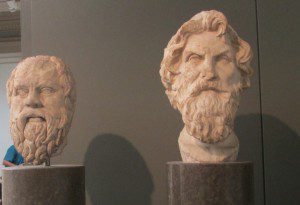Are you a visual learner who writes notes in a rainbow of different colors, or do you have to read something aloud before it will sink it? Chances are, you’ve been asked a similar question at some point in your life, and believe the concept of different “learning styles” is perfectly valid. But, as New York magazine reports, the idea that students learn differently depending on their personal preference for visual, auditory or kinesthetic queues is just a myth.
In fact, it’s considered a “neuromyth,” which, as Paul Howard-Jones, professor of neuroscience and education at Bristol University, writes in a 2014 paper on the subject, is characterized by a misunderstanding, misreading, or misquoting of scientifically established facts….
The aforementioned evidence against learning styles is compelling. In 2004, Frank Coffield, professor of education at the University of London, led research into the 13 most popular models of learning styles and found there wasn’t sufficient evidence to cater teaching techniques to various learning styles. And a 2008 study by Harold Pashler, psychology professor at UC San Diego, was scathing. Despite the preponderance of the learning styles concept “from kindergarten to graduate school,” and a “thriving industry” devoted to such guidebooks for teachers, Pashler found there wasn’t rigorous evidence for the concept. He wrote:
Although the literature on learning styles is enormous, very few studies have even used an experimental methodology capable of testing the validity of learning styles applied to education. Moreover, of those that did use an appropriate method, several found results that flatly contradict the popular meshing hypothesis. We conclude therefore, that at present, there is no adequate evidence base to justify incorporating learning styles assessments into general educational practice.
So how did a false belief become so widely-held? In his paper on the subject for Nature Reviews Neuroscience, Howard-Jones argues that it’s not a result of fraud, but of “uniformed interpretations of genuine scientific facts.” The assumption behind learning myths seems to be based on the scientific fact that different regions of the cortex have different roles in visual, auditory, and sensory processing, and so students should learn differently “according to which part of their brain works better.” However, writes Howard-Jones, “the brain’s interconnectivity makes such an assumption unsound.”











